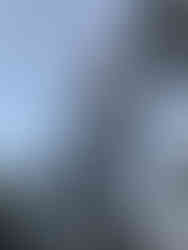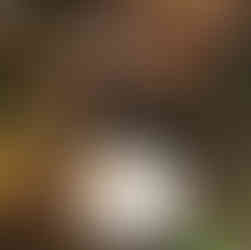
Minnesota is a pretty big state, with 400 miles from north to south and 86,943 square miles. This is about the same size as England, Wales, and Scotland all together (88,427 sq miles).
We were reminded of this large state when we headed up to the Big Bog Recreational Area (like a state park) for one final summer family camping adventure and with a 30-minute lunch stop, it took us over 5.5 hours to get there. That is a lot of podcasts….(this trip we listened to a few episodes of Revisionist History with Malcolm Gladwell, the Daily Show with Trevor Noah, Overheard at National Geographic, and Morally Indefensible, a crime show).
The Big Bog is located on Red Lake, Minnesota’s largest lake located entirely in Minnesota. The park is split into 2 separate areas-- the southern section is at the northeast edge of Upper Red Lake and includes the visitor center, fire tower, and campground area along the Tamarac River. Across Highway 72 are the Upper Red Lake beach and a couple of short trails, also a part of the park. 10 miles north on 72 is the northern unit which contains the Big Board Boardwalk area.
I feel like any camping trip within Minnesota (and most other states for that matter) should acknowledge the fact we are on stolen land and take some time to reflect on that. On this trip, we drove through 3 different reservations, including Red Lake, Leech Lake, and Mille Lacs. It reminds me I need to learn more about the history and the treaties that ceded land in the 1800s. This is another history that I was not taught in high school, but now it’s up to me to catch up on this topic. Recognizing and honoring the land is one very small start to acknowledging our American Indian community and neighbors.
There are two main reasons to visit the Big Bog park:
1. Fishing- the campsites along the Tamarac River have boat docks, allowing easy access to Red Lake. More on fishing later.
2. Unique carnivorous and medicinal plants found in the Big Bog.

I’ll start with the reason we came here, which is not fishing. We traveled there to see and learn more about the Big Bog. This area is 500 square miles of peat bog, the largest in the lower 48 states. The bog supports some very unique plants, including carnivorous pitcher plants, numerous kinds of mushrooms, orchids, and other flowering plants. Most of the flowering plants bloom in June to early July—so if you want to see that Lady Slipper or orchid, I would recommend a trip in spring.

The best way to experience the bog is the 1-mile bog walk (with a 1-mile return trip). Take your time and see the unique plants. If you walk too fast, you will miss a lot. The pitcher plants are fascinating. The leaves of the plant form a pitfall trap- a prey-trapping deep cavity filled with water and digestive fluid. The variety we saw were Purple Pitcher Plants which were green to reddish-purple with interesting veining. There were remnants of the mid-spring flowers which were on a single tall stem.
We also saw a lot of mushrooms. Some very large shrooms, I’m going to call them Chanterelles---(but don’t quote me) were plentiful. My plant app was not able to pin the species down exactly. The plants in the Big Bog were harvested by the Ojibwe for medicinal purposes as well as food.
The boardwalk terminates in an overlook of the bog. Despite the thriving unique plants and wildlife in the bog, before the turn of the century (1892), government land surveyors declared the bog “unfit for any purpose) and settlers attempted to drain the bog for farmland. Nature was not having it and it was unsuccessful. During WWII, it was used for military aircraft training and even as a bomb testing site. Finally, nature won the battle for the land it became an officially protected state recreation area in 2006.

Fishing. Cormac is the only person in our family with a fishing rod and we forgot to bring it. Bad mom, bad dad. The pond at the boardwalk area is stocked with crappies.
Red Lake is comprised of the Lower and Upper Red Lake areas with all of the Lower and part of the Upper Red Lake closed to the general public, as it’s a part of the Red Lake Nation/ Red Lake Band of Chippewa Indians. Red Lake used to be known as a walleye factory but in the late 1990s, the overharvesting led to a total collapse of the fishery. The Big Bog Recreation area was established during the recovery time (2000) as a way to boost the Wakish area economy. After years of effort, the fish are now thriving and fishing is now full-on again.
Most everyone at the Big Bog campground had boats and were there to fish. The campground features a big fish cleaning facility. There are 31 campsites as well as some camper cabins. We got campsite #1, which was adjacent to a wooded area. The neighboring campsites to the other side were close with no barriers between us. I’d recommend our site #1 for the reason there was privacy on at least one side. It was also right on the Tamarac River, had some decent trees for hammocks and plenty of space for tent pads. Distance to the toilets and showers was good---and the site had good morning sun.
The fire tower, unfortunately, was not open. I was looking forward to the view from the 100-foot tall1930’s tower. As expected because of the pandemic, the visitor center was also closed.
As a relatively small state park, there were only a few hiking trails. In the south unit, on the Red Lake side of the park, the Old Marina Trail had some interpretative signage explaining how there used to be campsites and a marina in that area until a storm flooded the area in 1975 and people had to be evacuated. They moved the campsite over to the Tamarac River at that point. Don’t even bother with the other small trail called Red Lake Beach Trail. A better name would be “Wade in the Swamp with Mosquitos Trail”. The boardwalk didn’t exist except for a few scattered boards that didn’t connect. We had to wade through the swampy water, kicking up even more of those big skeeters. Worst hike ever. At least it was very short.

We planned to go into Bemidji on Saturday. It was a good plan because we did the Big Bog boardwalk on Friday and without fishing, there was no more hiking to do. In Bemidji, we checked out Paul Bunyon and Babe—before meeting my parents and brother at Diamond Point Park. It was a gorgeous day for a picnic.
After catching up with family, we headed to Bemidji State Park. This is a much bigger park- located along Lake Bemidji, it has a lot of beach area, a large campground, plenty of hiking trails, and a bog boardwalk as well. We did the Hiking Club trail, which included the bog boardwalk. More pitcher plants, but not as many as the Big Bog.
And that, my friends, is our last camping trip of the year! (except for Kevin who's in the BWCA right now....) It was a record-camping year for us with 5 weekends in the tents.














































